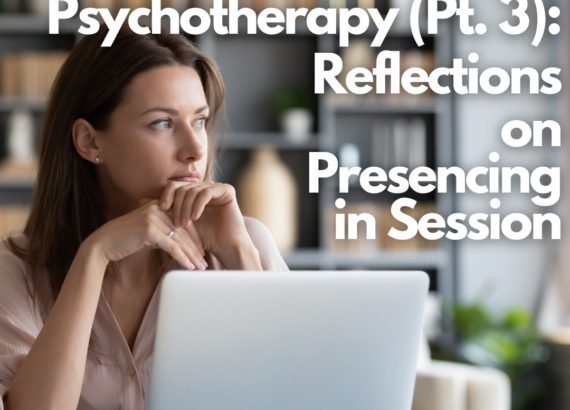Introduction to Season 2 (18)

Bridger and Caleb discuss their intent for the second season of The Evidence Based Therapist. The first half of this season will focus on what qualifies as evidence based therapy while continuing to make research approachable to therapists.
Evidence Based Therapy
- People are trying to make sense of the world, even when that desire is hidden behind the rigid scientific method
- Humans created the criteria, methodologies, and designs that determine whether something is evidence based.
- In theory, using evidence based therapy is anxiety relieving for therapists.
- In practice, however, the anxiety moves towards fear that this intervention may not bring about the healing the client is seeking.
- It’s easy to connect with the desire to practice evidence based therapy, of course.
- Because that should mean I know what I’m doing is going to work and the client will get better.
- When we’re seeking and fearful, we spend so much energy looking for the best model.
- When we find it or feel as though we’ve found it, we defend it. We’ll rigidly cling to it because this is the way.
- However, when we’re seeking from a nurturing perspective, the felt sense is a deep desire for the therapy to work.
- In those moments in the therapy room, when the client is in so much pain, asking for your help –
- Can you confidently say that what you’re doing is evidence based? That it is the way?
We Run Fastest in the Dark
- In the darkest moments of therapy, we’re seeking healing to offer the client.
- It’s not surprising how easy it is to run, then, with an evidence based model with all its hope and promise of providing healing.
- However, our brain makes sloppy errors for the sake of efficiency
- Sometimes, that’s how evidence based therapy feels.
- So can you invest hope into random control trials and literature?
- The way these researchers publish, the language they use, provides hope for clinicians and clients in those moments.
- Yet, many times when we look at it, we see that we’ve buried our heads in the sand.
Academic Inquiry in Psychotherapeutics
- It’s not about proving something
- Instead, it’s about learning how to speak about things to each other.
- Researchers are playing around with ideas and new ways of talking.
- Sometimes even inventing new words to try and better communicate the felt sense of the phenomenon they’re observing.
- We want to invite conversation into that space
- A conversation for others, from various disciplines, to bring what they know to the table.
No Villains & No Heroes
- From neuroscience to ecosomatics, and everything in between, what researchers are saying makes sense in some way.
- How can we come to understand and integrate that with what the rest of the world is saying?
- If this is our fundamental posture, we can somehow look at any phenomenon and say this makes sense.
- But, we have to talk to people.
- We have to read and truly listen and see if we can hear.
- In research, this can be hard.
- Research has its own language and it’s hard to pick up.
- Our goal with this season is to make that a bit more approachable.
Memory Reconsolidation
- It is the neurobiological study of how plasticity within the brain comes to inform changes about what has happened in your life and your experience-dependent development.
- We uncover the effect of entanglement accompanying this cognitive emotional learning and thus created this insulated pattern of reactivity.
- Memory reconsolidation is the foundation of every positive therapeutic encounter
- Reconsolidation changes the physical neural structure of memories.
- Memory reconsolidation involves reconsolidating in a way that doesn’t necessitate the use of an external strategy.
- If you’re not engaging in memory reconsolidation, you’re engaging in extinction.
- Extinction is prioritizing one strategy over another, which is different from changing the old strategy.
Evidence Based Therapies should be aiming for memory reconsolidation
Special Release – is Polyvagal theory debunked?
- Therapists, don’t get caught up in the news.
- Stay contextually oriented and open to not villainizing or overemphasizing any sort of fad or new research.
Season 2
- First half consists of laying a foundation and asking questions such as “what makes a model evidence based?”
- The second half will consist of getting into things like trauma, relational trauma, PTSD, and then conceptualizing disorders through the lens of open-handedness.
- How do we find a balanced, open posture for diagnoses, treatment, and understanding case conceptualization?
- An initiative started by the National Institute of Mental Health
- Re-investigate symptomology and disorders with a functional wellness perspective
- And how to integrate all human health sciences
Listener Engagement
- As more people get involved, the beauty transforms and exponentially grows
- Listening to us is just fine, but we’d love for you to engage and ask questions with us
Season 2 Articles
Did you know? After full completion of Beyond Healing Institute’s Somatic Integration and Processing training, each participant can receive 21 NBCC hours.
Connect with us on social media
Beyond Healing Media
- First, listen to our past episodes of EBT here
- Then, check out more Beyond Healing podcasts
- Give your support and gain access to exclusive content through Patreon
Beyond Healing Center
- Visit our website for all things BHC
- Contact us about retreats and therapy
- Contact us about training and consultation
Interested in supporting a child?
- https://www.patreon.com/BurntOutEducator
- 100% of the proceeds donated to the Burnt Out Educator will provide therapy for a child in the public school system.
- Not therapy capped at a certain number, but an open-ended relationship with a highly qualified therapist in the BHC network.
Podcast: Play in new window | Download




No Comments